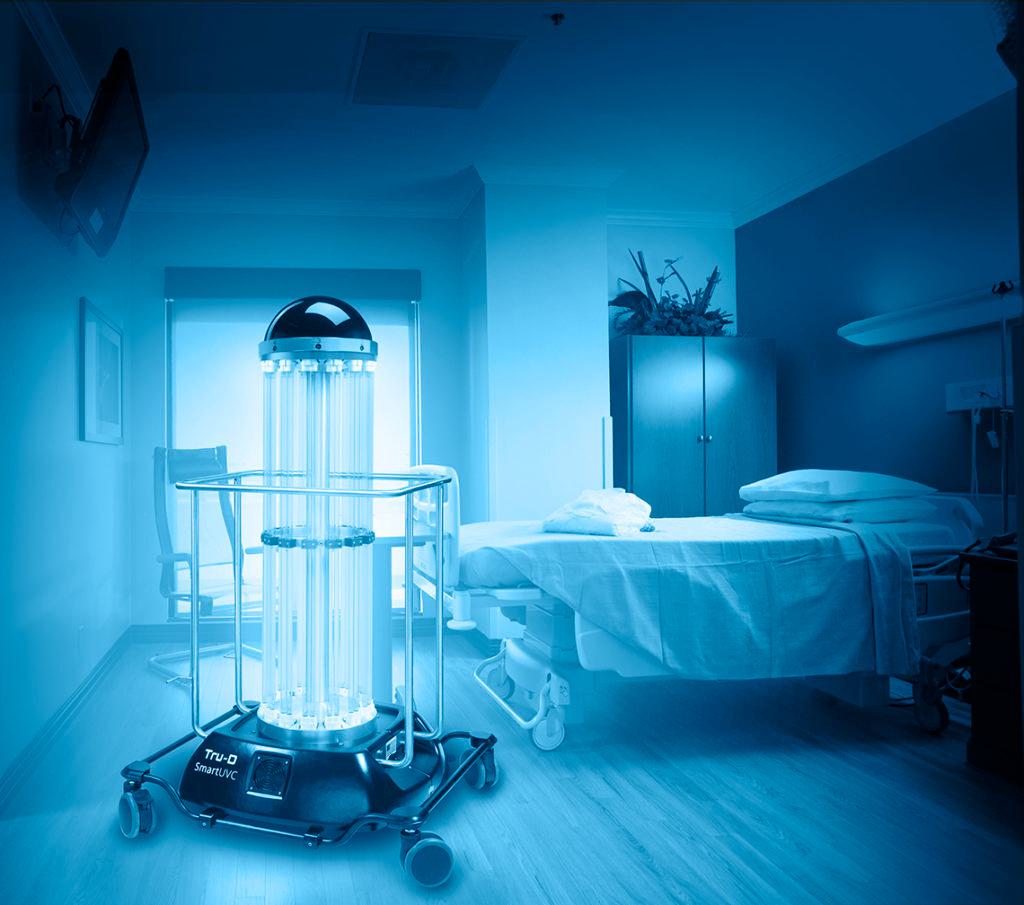Slidell Memorial Deploys UVC Disinfection Robot to Fight Infections
Tru-D robot destroys germs with cutting-edge technology

Slidell Memorial Hospital (SMH) recently added the Tru-D system, a pathogen-reducing UVC robot, to its already stringent list of disinfection protocols aimed at providing the cleanest health care environment possible.
The Tru-D device is now part of PDI Healthcare’s market-leading infection prevention solutions. Funded in part by the SMH Foundation, the Tru-D device is one way Slidell Memorial Hospital is raising the bar when it comes to the level of care it provides to all patients.
“The acquisition of this technology is simply another way that we’re working to safeguard the well-being of every single patient who walks through our doors and protect the integrity of our health care environment,” said SMH and Ochsner Medical Center — Northshore Chief Executive Officer Sandy Badinger.
The Tru-D device, which works by generating UVC light energy that modifies the DNA or RNA structure of an infectious cell, is the only portable UVC disinfection system on the market with patented Sensor360â technology. The device’s sensors calculate the precise dose of UVC energy needed to disinfect a room while compensating for room variables such as size, shape, surface reflectivity and contents to then deliver one, measured dose from one location in the room, effectively inactivating lingering pathogens in the space. This technology, coupled with the Tru-D device’s high-efficiency germicidal lamps, kills deadly pathogens such as SARS-CoV-2, methicillin-resistant staphylococcus aureus (MRSA), Clostridioides difficile (C. diff) and VRE.
“Hospitals that provide an extra level of care by disinfecting rooms with the Tru-D system are taking a proactive step in ensuring patients and staff have a clean and germ-free environment,” said Chuck Dunn, President of Tru-D SmartUVC. “It takes the guesswork out of previous protocols and ensures confidence in clinicians and patients alike.”
The CDC-funded Benefits of Enhanced Terminal Room Disinfection study showed that enhanced terminal room disinfection strategies using the Tru-D device decreased the relative risk of colonization and infection of target MDROs among patients admitted to the same room by a cumulative 30% in a hospital setting with 93% compliance of standard disinfection protocols. Individual hospital results may vary. It takes the guesswork out of previous protocols and ensures confidence in clinicians and patients alike.
After a hospital staff member cleans the room using traditional cleaning protocols, the Tru-D device is rolled in to complete the disinfection process. The robot is operated by a remote control outside the room and features an application that tracks infection control data while simultaneously uploading the information to the hospital’s web portal. Set up is quick and easy and does not require input of room measurements or covering of windows and vents. The robot can disinfect a room from one position, eliminating the need to move it to multiple places in the room. Once the cycle is complete, the Tru-D robot notifies the operator via audio and/or text message that the process has finished, and it can be moved to the next room.
For more information, visit Tru-D.com.
